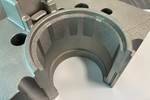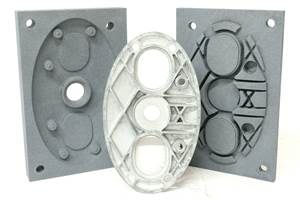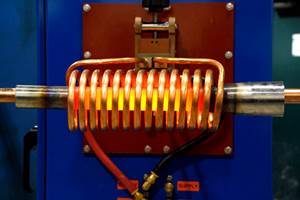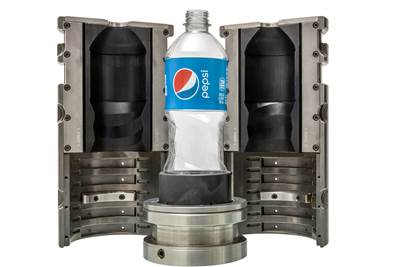Additive Brings Changes, Even if the Wrench Stays the Same
The argument that begins with what additive cannot do is probably right, and misses a great deal.
Share
Read Next
Here is a basic and obvious fact about additive manufacturing: It is the process that consists of adding material. That fact is right there in the name, after all. AM involves adding material, and doing so precisely.
It is a basic point, yet no other part-making process does this. Other processes involve cutting or subtracting material, or shaping and compacting material with a large tool. Additive is different, fundamentally so, and this fundamental difference has many, many implications.
Just one example is this: Precise material addition inherently makes AM a special process for repair. The essence of repair is adding something to replace what has worn or broken away. For some types of parts, repair is a big industry — aircraft engine blades among them. As a recently posted article describes, AM makes it possible to systemize and automate blade repair, turning remanufacturing into something that looks a lot like the original manufacturing. This is new, and it illustrates the kind of change additive is bringing. The scope and depth of change like this can be hard to see, and evaluations of additive often miss it.
I was in a conversation recently with a person I regard highly. His expertise is machining. He made the point that industrial metalworking values wrought properties. Precisely welding layer upon layer of metal won’t provide these same properties. “Additive manufacturing won’t make a wrench,” he said.
He is right. The wrench needs the wrought properties resulting from forging. AM is no candidate to produce a wrench until it can deliver both the properties and the economies that forging delivers today.
But during this conversation, I happened to be carrying 3D printed parts. (I have AM parts on hand more often than most.) A wrench is a tool, but I was able to show my friend a different kind of tool: tiny end effectors for a surgical robot, grippers much smaller than my fingertip that had been made through micro-controlled metal AM. New surgical possibilities will result from this newly available type of tool, and this is no isolated case. Various new capabilities will result from tooling made possible by AM (including tools such as these).

Then there is the very purpose of the wrench. This too must be considered. The wrench is a tool for fasteners, for assembly. Yet AM makes complex forms with intricate detail inside and out, consolidating structures that once had to be built from many components into single 3D printed pieces. Additive thereby reduces assembly. In a world with more AM, wrenches will be used less.
A final point relates to tools used by hand more broadly. In industrial production, we no longer make parts and products via operations by hand the way we did a century ago. Production uses machinery. Work by hand is much more the purview of repair. But to come back again to the story linked above about engine blades: Here is an early glimpse of how additive manufacturing can bring automation even to repair. Hand tools will retreat even further.
The changes additive brings affect part designs, products, supply chains and organizations. They affect assumptions and expectations around even simple things, even wrenches. This is the problem with the critique of AM that starts with something being done today and asserts that additive cannot do that thing. Presumably it can’t. But is that the end of it? Additive cannot make a wrench the way forging can, but additive is transforming tooling, and additive is bringing changes even to the wrench’s applicability.
There is room for the wrench to be wrought. There is room to find the future, and we need to do this. Manufacturing is big, leaving room for all of this, and AM is making it bigger. The wrench and the way it is made, alongside the changes that are coming — these things coexist and will continue to do so. Each can be appreciated by its own lights. And what is more, one will affect the other, even if they don’t seem to do so today.
Related Content
How to Build 10,000+ Shot Molds in Hours
Rapid tooling isn’t so rapid when it takes days to 3D print a metal mold, and then you still must machine it to reach the necessary tolerances. With Nexa3D’s polymer process you can print a mold in hours that is prototype or production ready and can last for more than 10,000 shots.
Read MoreFoundry Lab: How Casting in a Day Will Improve the Design of Metal Parts (Includes Video)
The company’s digital casting process uses 3D printing, but the result is a cast part. By providing a casting faster than a foundry, the company says effective prototyping is now possible for cast parts, as well as bridge production.
Read More3D Printing Supports Induction Coils — and Emergency Needs
As a participant in Michigan’s Project DIAMOnD initiative, Tucker Induction Systems received a 3D printer to use any way it saw fit, provided the capacity remains available in case of emergency. Use cases and lessons learned as part of this distributed manufacturing network.
Read More3D Printed End of Arm Tooling Aids Automation
Frustrations with traditional end of arm tooling led Richard Savage to start 3D printing custom versions for injection molding applications, eventually founding a company to fill this niche.
Read MoreRead Next
How Hybrid Tooling — Part 3D Printed, Part Metal Shell — Accelerates Product Development and Sustainability for PepsiCo
The consumer products giant used to wait weeks and spend thousands on each iteration of a prototype blow mold. Now, new blow molds are available in days and cost just a few hundred dollars.
Read MoreDrop-In Solutions Give Users the Benefits of 3D Printed Mold Tooling
3D printed mold components, including ejector pins with venting to eliminate gas traps, can improve performance of traditional injection mold tooling.
Read More4 Ways the Education and Training Challenge Is Different for Additive Manufacturing
The advance of additive manufacturing means we need more professionals educated in AM technology.
Read More









.png;maxWidth=300;quality=90)













